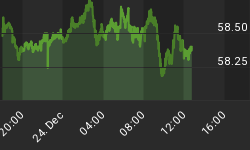The Federal Reserve's pause in its rate hiking campaign has dovetailed with the decline in energy prices and interest rates sending the Dow Jones to record territory. It is now universally accepted by the market that the slowdown in housing and the economy will result in a soft landing, one that keeps the Fed on hold and G.D.P. at trend growth or slightly below. These market cheerleaders have embraced this perfect scenario and the recidivism to their behavior prior to the equity collapse of 2000 may be to the downfall of investors. What is being overlooked by most pundits is that the unraveling of the housing bubble will be much longer lasting and more damaging to the consumer than anticipated.
During 2007, approximately $1trillion of the $9 trillion in outstanding mortgages will reset. The increase in these adjustable rates will send consumers' monthly payments hundreds of dollars higher and cause many more foreclosure homes to enter into this already saturated market. According to the Indymac bank of California (the 7th largest mortgage originator in the nation), up to 4% of home owners might lose their home in the next few months. That's four times the average rate of borrowers who normally default on their loan!
Remember the axiom that as goes the housing market, so goes the economy. One has to look beyond home equity extraction which has reached a total of $600 billion per year. When you account for the durable goods, commodities and labor that are supported by the housing market you begin to realize the expanse of the spectrum related to this part of the economy. What is difficult to factor into the equation is consumer's response to flat or declining home values. It is reasonable to assume that their current negative savings rate (it was negative for only two other years 1932-1933) will again turn positive as consumption declines.
A key point that must be stressed again is that home builders are still expanding supply well beyond the intrinsic demand. Home construction is running at 1.7 million units while actual demand is about 1.15 million units. This could add another .55 million units to an already near record 4 million unsold homes. In order for the market to achieve balance, home construction must drop below population growth and price to income ratios must fall. Neither of those situations is occurring. Sellers have been trying to avoid lowering their asking prices; this has kept year-over-year declines muted and hence caused prognosticators to claim the bottom as been reached and the worst is over for real estate.
Through real estate, many banks are exceeding federal guidelines regarding concentrated loan exposure. According to Fed Reserve data, ten states have over 50% of total banks in violation of guidelines for real estate loans, meaning the dangers of a banking debacle similar to the S&L crisis are elevated. New Jersey-based home builder Kara Homes, for example, filed for chapter 11 bankruptcy protection after defaulting on nearly $300 million in debt. But the stock market is too busy rejoicing over better than expected pro-forma earnings reports to worry about financial disruptions like bank failures or home builder bankruptcies.
What appears evident is that the economy is slowly weakening due to housing and the decrease in money supply and credit (inflation). Since the Fed mistakenly measures inflation as growth, we can predict that G.D.P. rates will be declining for at least the next two quarters. And the equity markets are not pricing in the shortfall in earnings which should accompany the slowing economy. Keep an eye out for an unusually weak Durable goods number on Thursday or G.D.P. number on Friday; any crack in the soft landing mantra would prove damaging for stocks, especially after this huge rally. This leads me to present the best play in the market today: invest in the stocks of balloon companies -- you know, the ones you tie "For Sale" signs onto.
*What about investment opportunities outside of the U.S? Read, "The Silk Road: an Investor's Guide to Asia's Largest Economies," our exclusive, free report by clicking here: http://www.deltaga.com/reportForm.asp?rep=3.
















